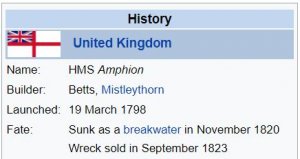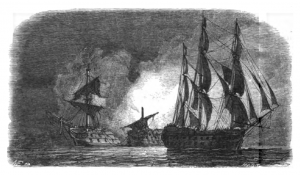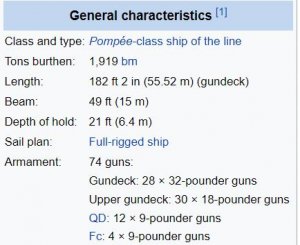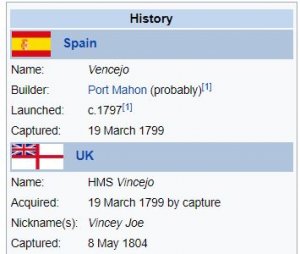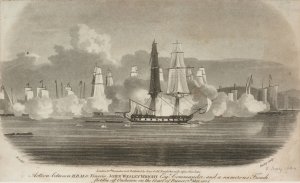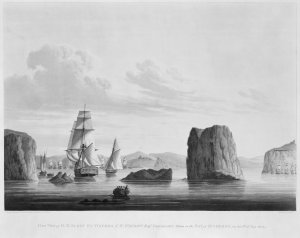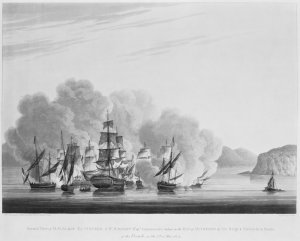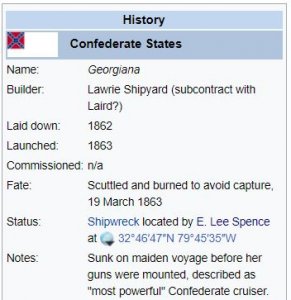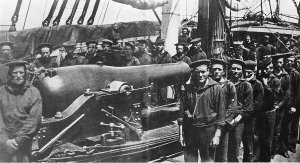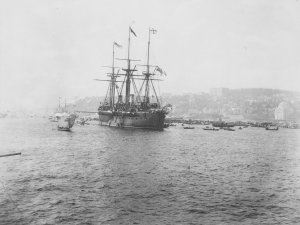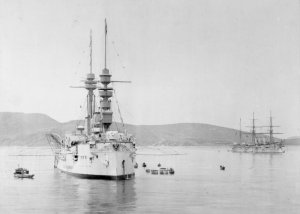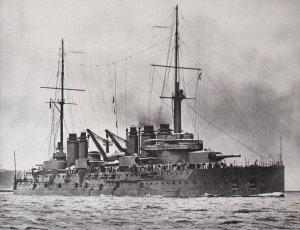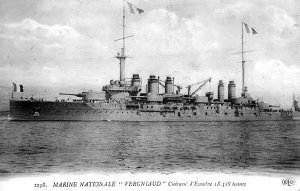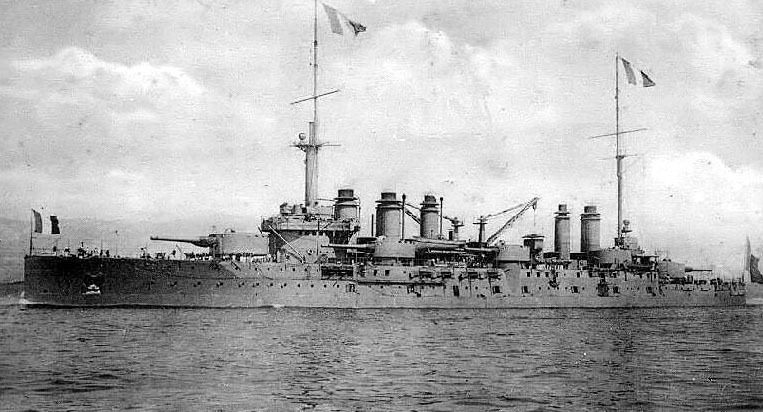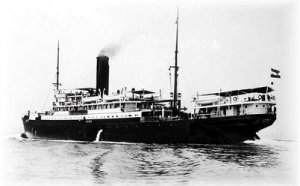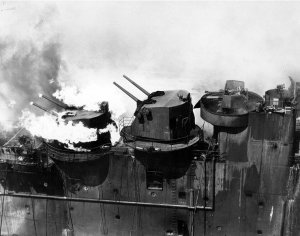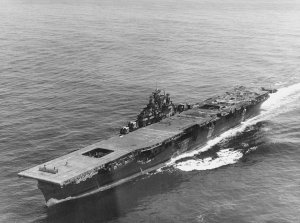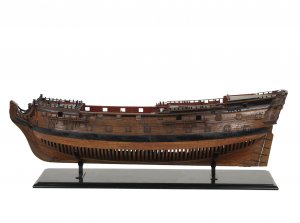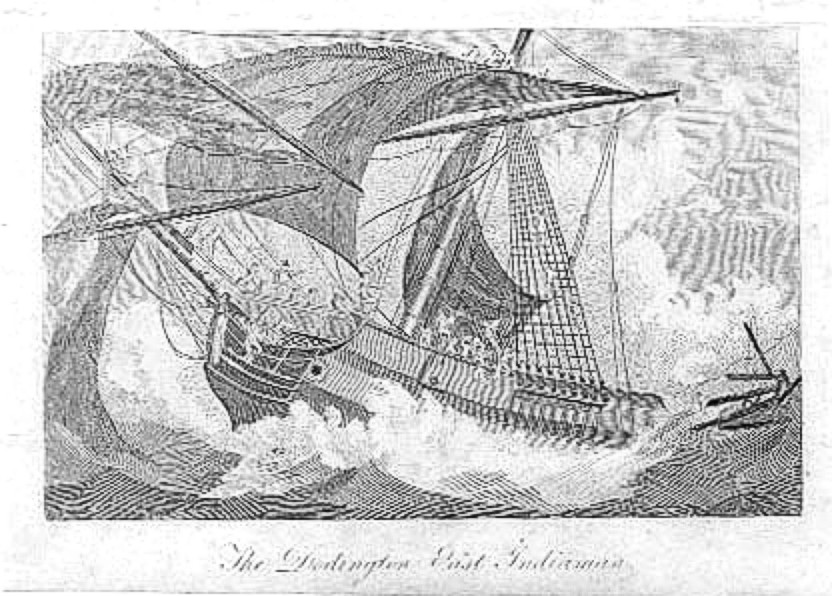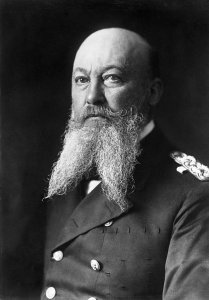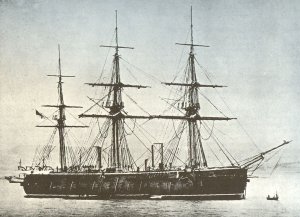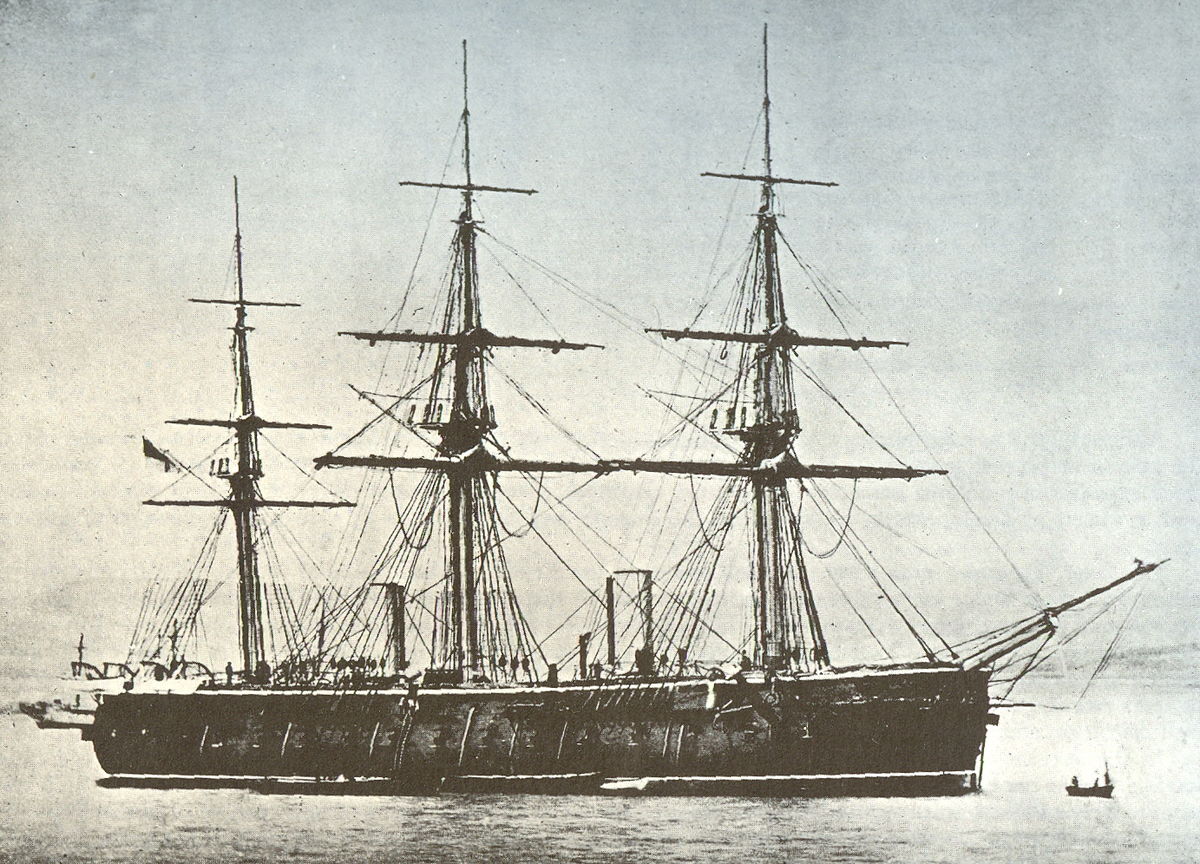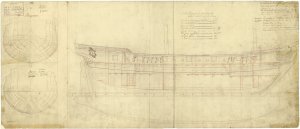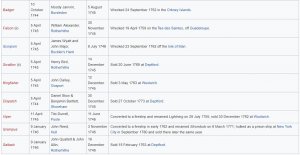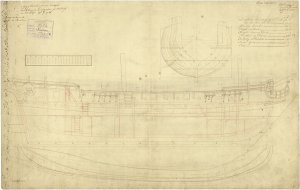Today in Naval History - Naval / Maritime Events in History
18 March 1967 - Great Britain, Scilly Isles: the 1,000 feet long supertanker "Torrey Canyon", owned by the Barracuda Tanker Company of Bermuda, with a load of 120,000 tons of crude oil from Kuwait ran into Pollard Rocks and broke apart.
SS Torrey Canyon was an LR2 Suezmax class oil tanker with a cargo capacity of 120,000 tons of crude oil. She was shipwrecked off the western coast of Cornwall, England, on 18 March 1967, causing an environmental disaster. At that time she was the largest vessel ever to be wrecked.
Design and history
When laid down by the Newport Shipbuilding and Drydock Company in the United States in 1959, she had a capacity of 60,000 tons. However, the ship was later enlarged in Japan to 120,000 tons capacity.
Shipbuilding and Drydock Company in the United States in 1959, she had a capacity of 60,000 tons. However, the ship was later enlarged in Japan to 120,000 tons capacity.
At the time of the shipwreck she was owned by Barracuda Tanker Corporation, a subsidiary of the Union Oil Company of California, and registered in Liberia but chartered to British Petroleum. She was 974.4 feet (297.0 m) long, 125.4 feet (38.2 m) beam and had 68.7 feet (20.9 m) of draught.
Accident and oil spill
Main article: Torrey Canyon oil spill
On 19 February 1967, Torrey Canyon left the Kuwait National Petroleum Company refinery, at Mina, Kuwait (later Al Ahmadi) on her final voyage with a full cargo of crude oil. The ship reached the Canary Islands on 14 March. From there the planned route was to Milford Haven in Wales.
Torrey Canyon struck Pollard's Rock on Seven Stones reef, between the Cornish mainland and the Isles of Scilly, on 18 March. It became grounded and, several days later, began to break up.
In an effort to reduce the size of the oil spill, the British government decided to set the wreck on fire, by means of air strikes from the Fleet Air Arm (FAA) and Royal Air Force (RAF). On 28 March 1967, FAA Blackburn Buccaneers from RNAS Lossiemouth dropped 1,000 lb (454 kg) bombs on the ship. Afterwards RAF Hawker Hunter from RAF Chivenor dropped cans of jet fuel (kerosene), to fuel the blaze. However, the fire was put out by high tides, and further strikes were needed to re-ignite the oil, by FAA de Havilland Sea Vixens from RNAS Yeovilton and Buccaneers from the RNAS Brawdy, as well as RAF Hunters of No 1(F) Sqn from RAF West Raynham with napalm. Bombing continued into the next day, until Torrey Canyon finally sank. A total of 161 bombs, 16 rockets, 1,500 tons of napalm and 44,500 litres of kerosene were used.
Attempts to contain the oil using foam-filled containment booms were largely unsuccessful, due to the booms' fragility in high seas.
Guernsey
When the oil reached Guernsey seven days after the grounding, authorities scooped up the oil into sewage tankers and siphoned it off into a disused quarry in the northeast of the island. Some time later, micro-organisms were introduced to see if they could break the oil down into carbon dioxide and water. This was a limited success, so in 2010, a bio-remediation process was initiated to speed up the process.
Aftermath[edit]
An inquiry in Liberia, where the ship was registered, found Shipmaster Pastrengo Rugiati was to blame, because he took a shortcut to save time to get to Milford Haven. Additionally a design fault meant that the helmsman was unaware that the steering selector switch had been accidentally left on autopilot and hence was unable to carry out a timely turn to go through the shipping channel.[7]
The wreck lies at a depth of 30 metres (98 ft)
 en.wikipedia.org
en.wikipedia.org
18 March 1967 - Great Britain, Scilly Isles: the 1,000 feet long supertanker "Torrey Canyon", owned by the Barracuda Tanker Company of Bermuda, with a load of 120,000 tons of crude oil from Kuwait ran into Pollard Rocks and broke apart.
SS Torrey Canyon was an LR2 Suezmax class oil tanker with a cargo capacity of 120,000 tons of crude oil. She was shipwrecked off the western coast of Cornwall, England, on 18 March 1967, causing an environmental disaster. At that time she was the largest vessel ever to be wrecked.
Design and history
When laid down by the Newport
 Shipbuilding and Drydock Company in the United States in 1959, she had a capacity of 60,000 tons. However, the ship was later enlarged in Japan to 120,000 tons capacity.
Shipbuilding and Drydock Company in the United States in 1959, she had a capacity of 60,000 tons. However, the ship was later enlarged in Japan to 120,000 tons capacity.At the time of the shipwreck she was owned by Barracuda Tanker Corporation, a subsidiary of the Union Oil Company of California, and registered in Liberia but chartered to British Petroleum. She was 974.4 feet (297.0 m) long, 125.4 feet (38.2 m) beam and had 68.7 feet (20.9 m) of draught.
Accident and oil spill
Main article: Torrey Canyon oil spill
On 19 February 1967, Torrey Canyon left the Kuwait National Petroleum Company refinery, at Mina, Kuwait (later Al Ahmadi) on her final voyage with a full cargo of crude oil. The ship reached the Canary Islands on 14 March. From there the planned route was to Milford Haven in Wales.
Torrey Canyon struck Pollard's Rock on Seven Stones reef, between the Cornish mainland and the Isles of Scilly, on 18 March. It became grounded and, several days later, began to break up.
In an effort to reduce the size of the oil spill, the British government decided to set the wreck on fire, by means of air strikes from the Fleet Air Arm (FAA) and Royal Air Force (RAF). On 28 March 1967, FAA Blackburn Buccaneers from RNAS Lossiemouth dropped 1,000 lb (454 kg) bombs on the ship. Afterwards RAF Hawker Hunter from RAF Chivenor dropped cans of jet fuel (kerosene), to fuel the blaze. However, the fire was put out by high tides, and further strikes were needed to re-ignite the oil, by FAA de Havilland Sea Vixens from RNAS Yeovilton and Buccaneers from the RNAS Brawdy, as well as RAF Hunters of No 1(F) Sqn from RAF West Raynham with napalm. Bombing continued into the next day, until Torrey Canyon finally sank. A total of 161 bombs, 16 rockets, 1,500 tons of napalm and 44,500 litres of kerosene were used.
Attempts to contain the oil using foam-filled containment booms were largely unsuccessful, due to the booms' fragility in high seas.
Guernsey
When the oil reached Guernsey seven days after the grounding, authorities scooped up the oil into sewage tankers and siphoned it off into a disused quarry in the northeast of the island. Some time later, micro-organisms were introduced to see if they could break the oil down into carbon dioxide and water. This was a limited success, so in 2010, a bio-remediation process was initiated to speed up the process.
Aftermath[edit]
An inquiry in Liberia, where the ship was registered, found Shipmaster Pastrengo Rugiati was to blame, because he took a shortcut to save time to get to Milford Haven. Additionally a design fault meant that the helmsman was unaware that the steering selector switch had been accidentally left on autopilot and hence was unable to carry out a timely turn to go through the shipping channel.[7]
The wreck lies at a depth of 30 metres (98 ft)



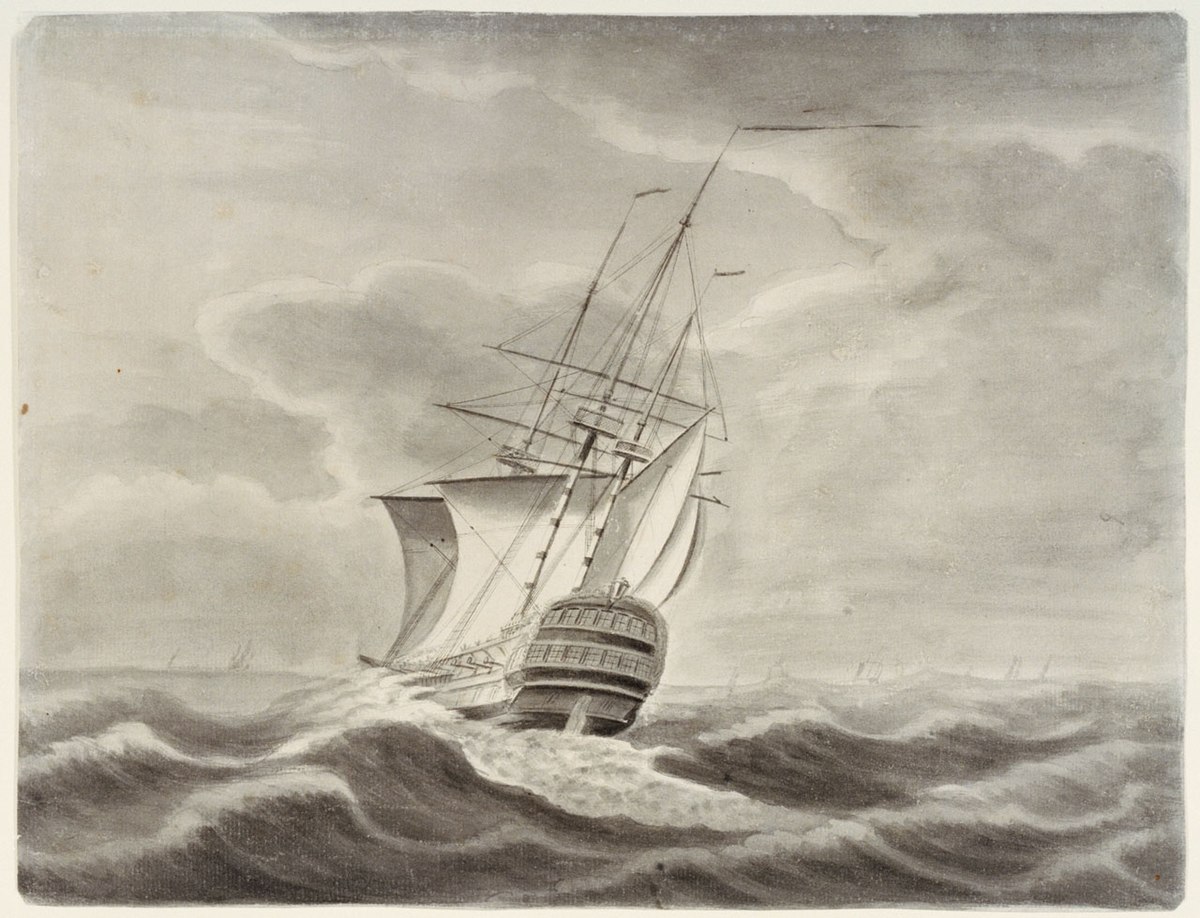



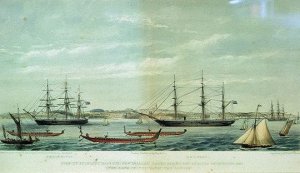



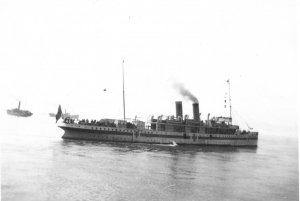







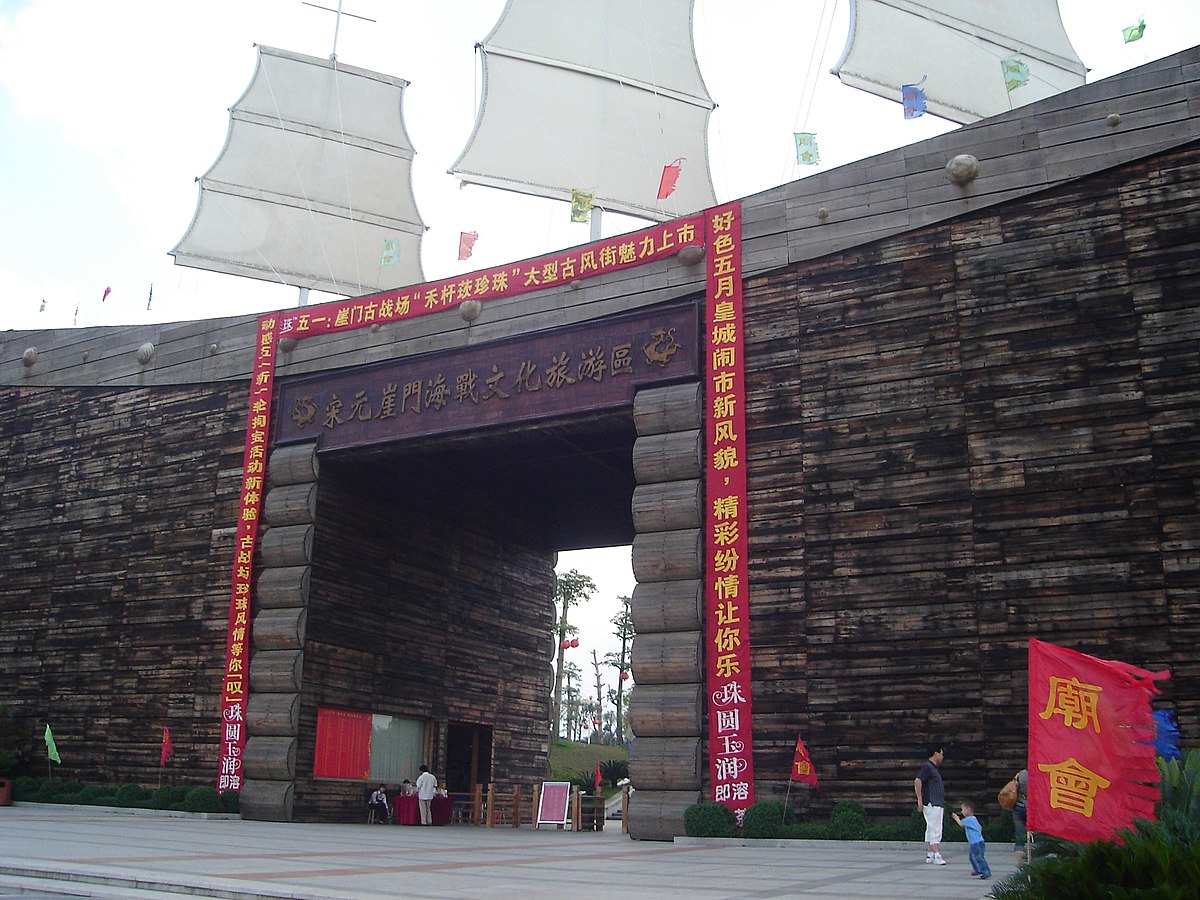



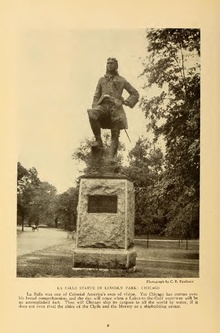

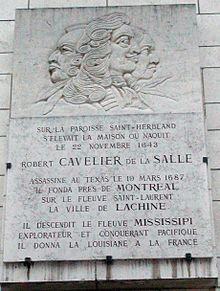
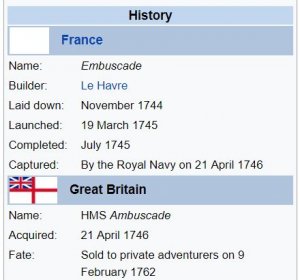
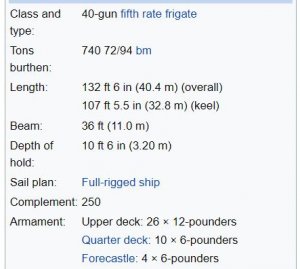

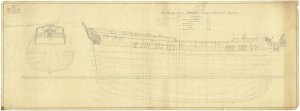

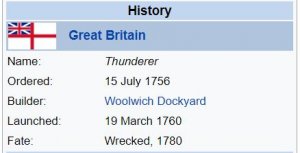



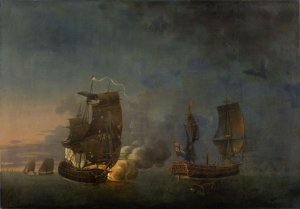
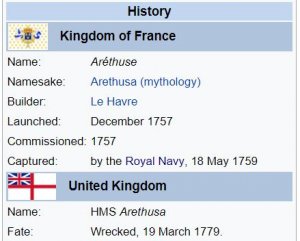
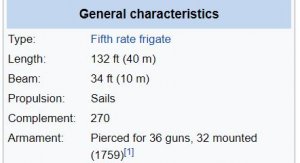



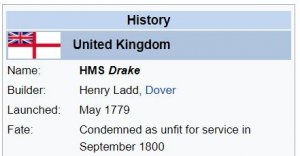


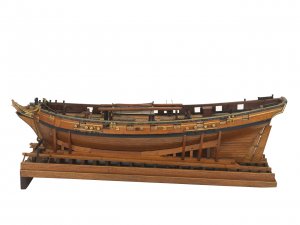




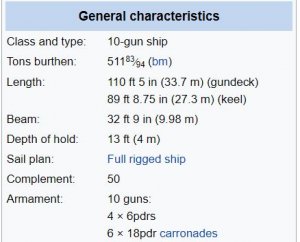

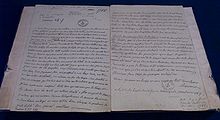


 from HMS Sirius in Sydney.
from HMS Sirius in Sydney.

